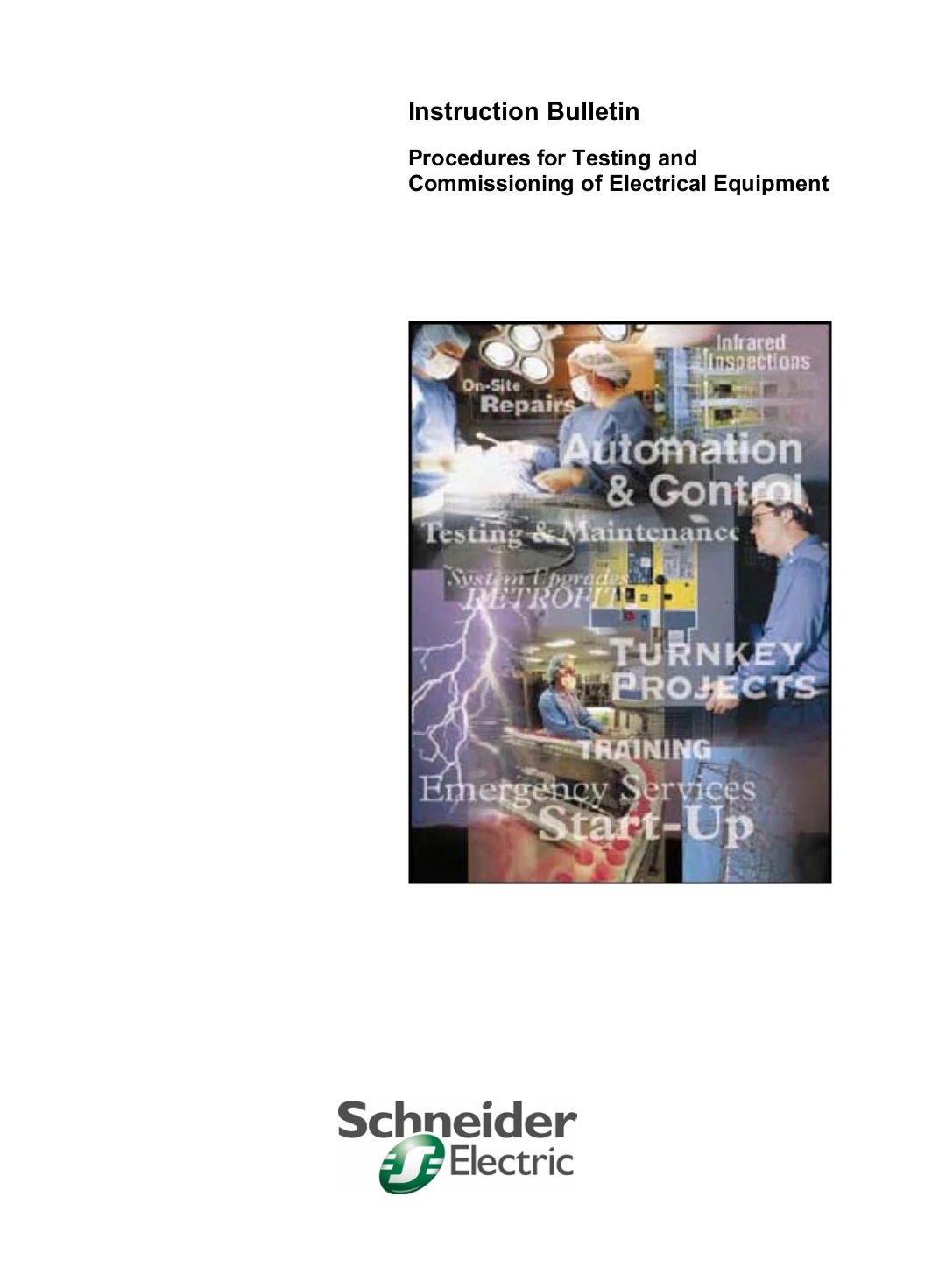INDEX
Testing and commissioning of electrical equipment are essential phases in the lifecycle of electrical systems. These processes ensure that all equipment functions according to specifications and safety standards before being fully operational. Below is an overview of what each phase involves, why it is important, and the typical procedures associated with each.
1. Importance of Testing and Commissioning
Testing and commissioning are critical to ensuring the reliability, safety, and efficiency of electrical equipment. Properly conducted tests identify potential defects, design issues, or installation errors that might lead to failures, hazards, or reduced performance. Commissioning verifies that the equipment not only meets design and operational requirements but also complies with regulatory and safety standards. The combined processes help prevent costly downtime, reduce maintenance needs, and increase system longevity.
2. Key Phases in Testing and Commissioning
A. Factory Acceptance Testing (FAT):
This initial testing is performed at the manufacturer's facility before the equipment is shipped to the installation site. FAT verifies that the equipment meets the client’s specifications and is free from defects. Tests commonly conducted at this stage include insulation resistance, dielectric withstand, functionality, and component calibration.
B. Site Acceptance Testing (SAT):
Once the equipment arrives on-site, it undergoes SAT to ensure it hasn't been damaged during transportation and still meets operational requirements. SAT includes insulation testing, functionality checks, mechanical checks, and verification of documentation. This phase often involves client and third-party witnessing.
C. Pre-Commissioning Tests:
This stage includes inspections and tests performed after installation but before the equipment is energized. Pre-commissioning tasks include cable and wiring checks, continuity tests, grounding and bonding checks, mechanical inspections, and phase sequence verification. These tests ensure that the equipment has been installed correctly and that all connections are secure.
D. Commissioning Tests:
These are final tests performed after installation and pre-commissioning. At this stage, the equipment is energized, and all control systems are tested to ensure they perform as required under actual operating conditions. Typical tests include load tests, trip tests, relay tests, functional performance, interlock verification, and protection device checks.
E. Performance Testing:
During performance testing, the equipment is subjected to typical and extreme operating conditions to verify its capability. These tests ensure the equipment will perform reliably under real-world conditions, addressing any operational issues and tuning the equipment for peak efficiency.
3. Types of Tests in Commissioning
- Insulation Resistance Testing: Verifies that the insulation around electrical components can withstand normal operating voltages.
- Dielectric Testing (Hi-pot Testing): Measures insulation effectiveness at higher-than-normal voltages, which helps detect weak insulation points.
- Grounding and Bonding Checks: Ensures all equipment is properly grounded to prevent electric shock hazards and provide safe paths for fault currents.
- Continuity Testing: Confirms that all circuits are connected properly and will allow uninterrupted current flow.
- Functionality Testing: Verifies that the equipment performs as expected, including all operating modes and sequences.
- Load Testing: Simulates real operating conditions to ensure the equipment can handle its rated load without overheating or malfunctioning.
4. Documentation and Handover
Documentation is a critical aspect of the testing and commissioning process. Each test performed is recorded, with results compared to specifications to confirm compliance. Final documentation, including test certificates, commissioning reports, and operational manuals, is handed over to the client after successful commissioning. This documentation serves as a reference for maintenance, troubleshooting, and regulatory audits.
5. Safety Considerations
Safety is paramount during testing and commissioning. Personnel involved should follow safety protocols, including wearing appropriate personal protective equipment (PPE), adhering to lockout/tagout procedures, and following safety guidelines to mitigate risks associated with live testing and high voltage equipment.
6. Conclusion
The testing and commissioning of electrical equipment are essential to guarantee that systems will operate reliably and safely. By ensuring that equipment meets design and safety standards before being put into service, testing and commissioning help prevent operational failures, enhance safety, and contribute to the long-term success of electrical installations.

